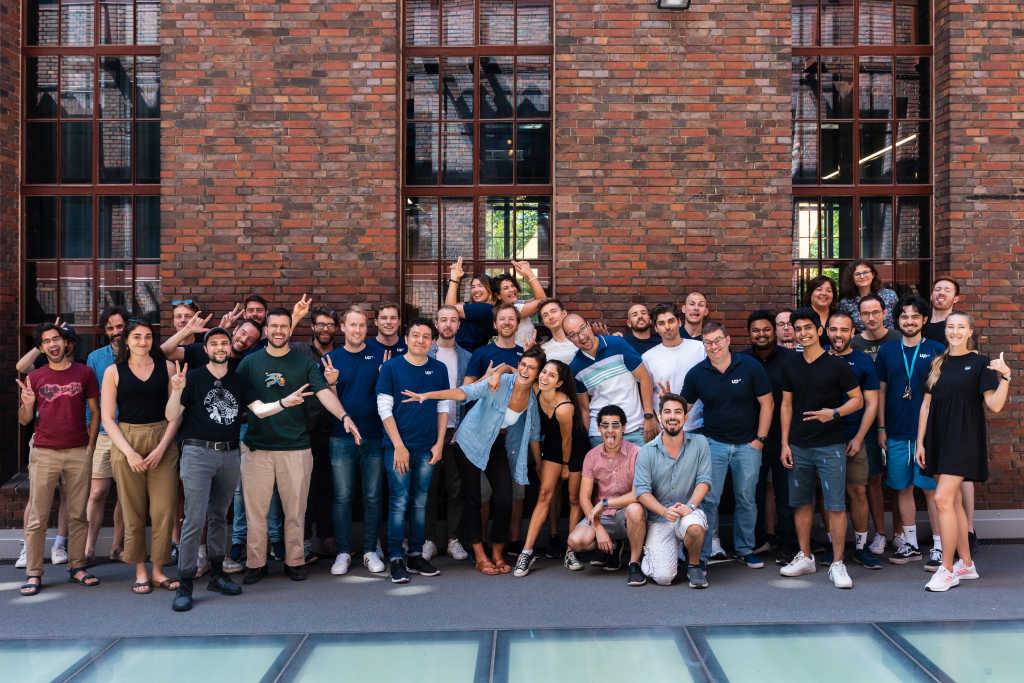UP42, like most companies at the moment, switched to “work from home” mode in March when the Covid-19 news was getting more and more real. It has been over 3 months since that day and we are still making an effort to establish the best ways to communicate, cooperate, and organize ourselves.
Because we are a growing company, there was no particular pause on our hiring efforts. We had a solid process in place for quite some time already, but now we couldn’t do face to face sessions anymore— so getting to know our candidates got a bit more complicated. At first, you may think it’s relatively easy, you just switch to video calls!
But how do you handle technical or whiteboard sessions with Engineering or Product candidates? How do you make sure that you really get to know the candidate without seeing them in person? How do you make a hiring decision without that? And most importantly, because we didn’t know how long we will stay in remote work mode—how do you onboard everyone starting jobs in the meantime?
In May, we were expecting to welcome on board five new joiners. We started a month in advance to prepare a fully virtual onboarding—it became my part-time job and involved a lot of people and even more scheduling.
Now, after completing a survey to check the results and iterate for the next month to come - I can share some useful tips:
1. Brainstorm with your team beforehand
Even for me, being on the other side of the recruitment process, it did sound daunting in the beginning. I’ve read a lot of articles about companies who were working with remote teams, so together with the HR team, we organized brainstorming sessions to share ideas and thoughts.
I know for a fact that starting a new job is scary (been there, done that) but imagine starting a new job in the middle of a global pandemic, not being able to sit in one room with your new team and have those crucial conversations over coffee or lunch that normally help you get to know people better. That’s why brainstorming beforehand so we got it just right, made a difference.
2. Set expectations with hiring teams
We started our changes with hiring. I let my hiring managers and hiring teams know that we will have to be able to make decisions based on video calls only. This meant, setting the expectation that there would be more video interviews, time spent getting to know candidates, as well as onboarding new hires.
We tried to involve as many video calls as we could to really make a connection with the candidate. You can also use some tools to support more technical sessions, we shared our screens and left even more time for the candidate’s questions.
3. Encourage people to turn on their camera
We encouraged our team to have their camera turned on in every video call with a candidate or new hire (where possible). For a new joiner, it’s already hard to remember all names of the people they are working with.
Connecting the name with a face makes this process much easier and the conversations just get a bit more personal.
4. Ask every team to prepare a project presentation
It is important for a new joiner to get to know not only their immediate team but also other teams in the company. That’s why, in addition to the regular first day of onboarding with team leads, we asked team members to present on additional days. They highlighted their structure, goals and recent projects—sharing more about their work and what they do on a day to day basis.
This provided new joiners with a way to see the connection between teams, common projects, and tools. With remote onboarding, it’s important to schedule all these virtual presentations in advance in everyone’s calendars.
5. Introduce a buddy program
If your company does not have a buddy program in your current onboarding process, moving to online onboarding is the best excuse to start. It’s an onboarding and knowledge sharing method used to orient new employees.
Assigning a workplace buddy who guides the new person through the first month on the job makes it easier for the newcomer to feel comfortable and less stressed. The buddy is there to answer questions, introduce other team members, and to do regular check-ups on their wellbeing.
6. Involve the team and have direct manager support
Regardless of the onboarding happening virtually or not, new people want to feel a part of the team soon after joining. Now, with fewer social interactions, it is very important to create opportunities for those social interactions to take place.
For example, invite the new employee to all relevant company ceremonies and meetings, schedule regular 1-on-1s, and try to stay in contact with them on a daily basis—especially during the first 2 weeks.
I hope this helps you and your team welcome new joiners virtually, let us know if you have any tips you’ve learned along the way!
Want to join us? Check out UP42 positions here!




